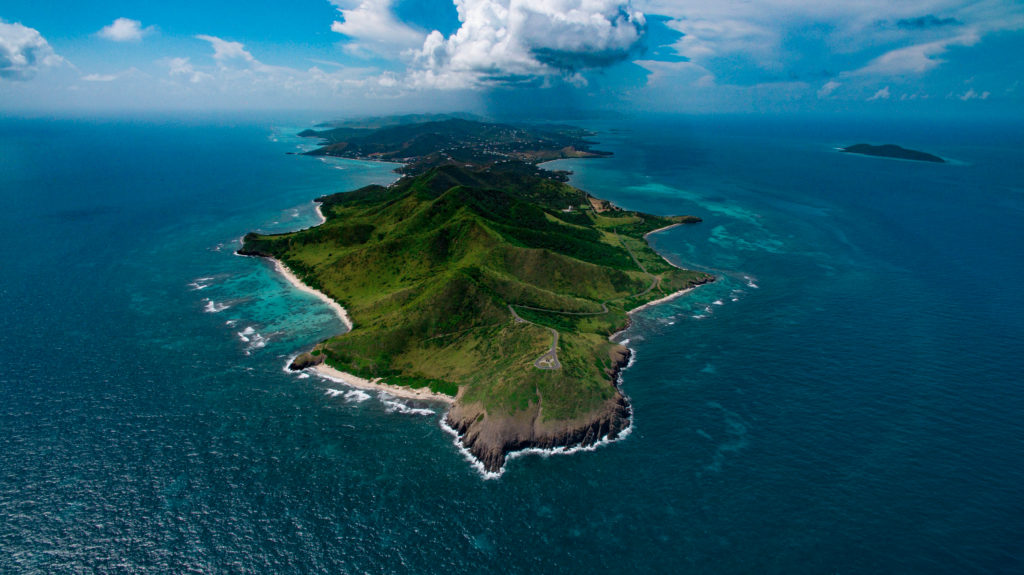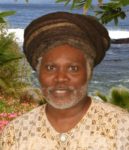
Editor’s note: Olasee Davis is an Extension professor/Extension specialist in natural resources at the University of the Virgin Islands who writes about the culture, history, ecology and environment of the Virgin Islands when he is not leading hiking tours of the wild places and spaces of St. Croix and beyond. The Source is pleased to be carrying his columns.

Point Udall, the most eastern point of the United States, is the birthplace of the sunrise in the Virgin Islands. It is one of the most aesthetically pleasing, attractive, and beautiful places on St. Croix.
This area, which encompasses both the Virgin Islands Territorial Park and St. Croix East End Marine Park, is often featured on social media, in magazines, and in online advertisements glorifying the unspoiled, natural, terrestrial and marine environments of the East End coastline of the island.
Over the years, many have fallen in love with the eastern point of St. Croix, where thousands of people, which include locals as well as national and international visitors, flock to see Point Udall’s breathtaking ocean views.
The surrounding rugged landscape of Point Udall, with its many guts, forest types, grassland, valleys, hills, and Goat Hill and Sugarloaf Hill, both rising 672 feet high above sea level, are the key ingredients to the East End watershed wilderness area that attract so many explorers and the adventurous at heart.
It is for these reasons and more that the area is preserved indefinitely for generations of Virgin Islanders and visitors alike. The East End has many statuses of protection, which protect this jewel of St. Croix in the open sea and wilderness area.
One of the statuses is known as the Area of Particular Concern, which begins at Hughes Point on the shoreline heading northwest for 2,000 feet; then west for 500 feet; then northerly to the mid-point of Knight Bay; then due north to a point on the outer shelf edge or three-mile limit, whichever is closer; then east along the outer shelf edge or three-mile limit around Point Udall, and south and west to a point south of Hughes Point; and then north to Hughes Point, the point of origin.
The boundary of this wilderness area encompasses Jack Bay, Horseshoe Bay, Isaac Bay, East End Bay, Boiler Bay, Cotton Garden Point, and Cotton Garden Bay (Cramer Park). The surrounding water of the East End is also protected. The East End watershed of St. Croix falls within the boundaries of the marine protected area. This area is known as the St. Croix East End Marine Park (Department of Planning and Natural Resources), with an area of approximately 60 square miles along the shoreline, 17 miles from Green Cay on the north to Great Pond Bay on the south.
The East End also has a cultural and historical component, which constitutes the human settlement of the area. For more than 2,000 years, the indigenous people of St. Croix fished, hunted, gathered conch, crabs, whelks, mollusks, and other sea life as well as edible plants and used them for medicine.
This area is the largest pre-Columbian village site of the East End. In the 1700s to 1848, runaway slaves known as Maroons also occupied the East End Quarter. Goat Hill, for example, was used as a temporary refuge for fugitive slaves throughout the Danish period. Despite the frequent Maroon hunts in the area, Goat Hill and the entire East End Quarter remained a stronghold for runaway slaves.
For the past few years, the cultural, historical, natural and marine resources of the East End have been impacted by humans. Soil erosion and vegetation disruption are rapidly taking place due to vehicles driving off the paved road and onto the hillsides.
Steps must be taken if we are ever to preserve one of the most beautiful places in the Virgin Islands. The University of the Virgin Islands Cooperative Extension Service School of Agriculture, DPNR’s East End Marine Park, and the Nature Conservancy are working together to ensure the preservation of these precious resources.
Listen out for upcoming town hall meetings, radio talk show discussions, ads in our local newspapers, and other social media outlets. As Virgin Islanders, we can and must do better at preserving the marine and terrestrial environment of the East End for future generations.


